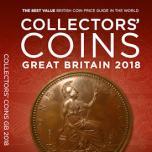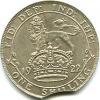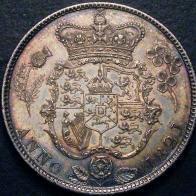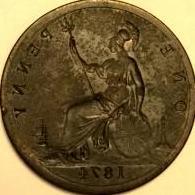Michael Freeman has asked me to add the following to this thread: Everyone is entitled to opinions, but not to distort facts without having any knowledge about them. I did not 'self-publish for decades because I had to'. In 1963, I chose to publish 'The Victorian Bronze penny' myself because my friend, Stanley Langman, had a printing company in Glasgow and he gave me a reasonable price; and I had 'hands-on' involvement with everything. It seemed a good idea to try to sell them myself, which I did. This was a success, and in 1966 he printed a second edition for me. The same facts applied in 1969, when I wrote 'The Bronze Coinage of Great Britain'. I did not ask anyone to publish it. In 1983, living then in England, near London, I wrote another book on the subject of buying and selling coins, which Hutchinson published (in the name of Barrie and Jenkins, an offshoot company). They also published the 2nd edition of 'The Bronze Coinage of Great Britain' in 1985. I did not approach anyone else to do this. In 2006 Spink asked me if I wanted to write an updated 3rd edition; but settled for permission to re-print the 1985 book. I had sold my collection in 1984 and 1986, so took no interest in bronze coins from then on. The late Laurie Bamford, whom I had known for many years as an expert, offered to give me a list of what had been discovered since then, to bring me up to date, but by 2006, I did not have the same enthusiasm as I had when I was a collector. On the matter of my rarity estimates, I based these on hard statistics. In the case of post-Victorian coins, I withdrew large numbers of bags from banks, to augment what I had already noted. This was in the 1960s, when all the coins covered in this book were in circulation. There was no better way of assessing rarity - mintage figures do not give die varieties. Regarding Victorian pennies and halfpennies, by 1966, when they were withdrawn by the banks for melting, I held over 62,000 of the former and 3,000+ of the latter. A fair proportion of them were badly worn, but enough were not and I can think of no better means of assessing their rarity than this randomly assembled collection. It enabled me to compare and assume relative rarity to the point where I felt I could assign 40 different degrees of rarity. I developed a sharp eye for identifying very worn coins with only a few areas visible. An example was the 1862 obverse 2 penny. The top leaf on the bust points to a lower area than on the usual obverse 6. I wrote to Peck when I discovered it, as he had hinted at its possible existence in a footnote in his book. The same applies to many other distinguishing features, such as in identifying the rare reverse F from only parts of the silhouette of Britannia. I sold all my legible Victorian pennies at 2 1/2d each to Corbitt and Hunter of Newcastle in 1966. A crane lifted them, and the doors in my parents' house stopped swinging to the place where I had kept them! I have no doubt that my estimates are pretty accurate where I had thousands of examples, such as in the 1895-1901 Veiled Bust series. Where I had only a few, or one coin, of a type or die pairing, clearly there was not enough to go on to be certain of assigning an accurate rarity estimate. As I stated in my Introduction to the book (which is important and often not fully read), I knew some were likely to be wrong, and I think this applies to the very rarest, some of which, judging from auctions at the excellent London Coin Auctions, are less rare than I assessed them to be in 1969. I considered that melting down millions of coins would increase rarity; and I also took into account the fact that some types had become unidentifiable as a result of having suffered heavy wear from over 100 years of circulation, making the rare ones moreso. I am fortunate enough still to be alive at almost 75, so able to correct the unfounded criticism I have read on this forum. And flattered and happy to see that, worldwide, my book on bronze is used by top dealers and auction houses as the standard reference work." Michael Freeman
 Coinpublications.com
Coinpublications.com






